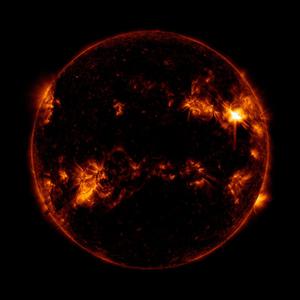Glossary term: 恆星活動
Description: 恆星活動是用於描述磁場對恆星產生的各種影響的總稱。擁有強磁場的恆星表面會出現更多星斑。恆星的磁場也可能是其日冕加熱的來源,因此具有更強磁場的恆星通常會從日冕發出更多的X射線和紫外線輻射。在恆星光譜中也可以看到活動跡象,尤其是氫-α譜線的發射。這些效應呲合起來可以粗略地量化恆星的“活動”程度。質量較大的恆星(光譜類型為O型、B型和早期A型)通常活動較弱。隨著恆星質量的降低,活動逐漸增強,並在紅矮星(M型矮星)處達到峰值。年輕恆星比老年恆星更活躍。以太陽為例,其活動遵循一個11年的週期,期間黑子的數量會發生變化。
Related Terms:
See this term in other languages
Term and definition status: The original definition of this term in English have been approved by a research astronomer and a teacher The translation of this term and its definition is still awaiting approval
This is an automated transliteration of the simplified Chinese translation of this term
The OAE Multilingual Glossary is a project of the IAU Office of Astronomy for Education (OAE) in collaboration with the IAU Office of Astronomy Outreach (OAO). The terms and definitions were chosen, written and reviewed by a collective effort from the OAE, the OAE Centers and Nodes, the OAE National Astronomy Education Coordinators (NAECs) and other volunteers. You can find a full list of credits here. All glossary terms and their definitions are released under a Creative Commons CC BY-4.0 license and should be credited to "IAU OAE".
If you notice a factual or translation error in this glossary term or definition then please get in touch.
Related Media
太陽黑子
Credit: NASA/SDO/HMI credit link
License: PD Public Domain icons
太陽耀斑
Credit: NASA/SDO credit link
License: PD Public Domain icons










